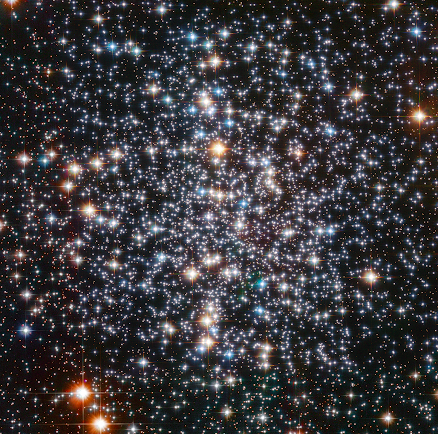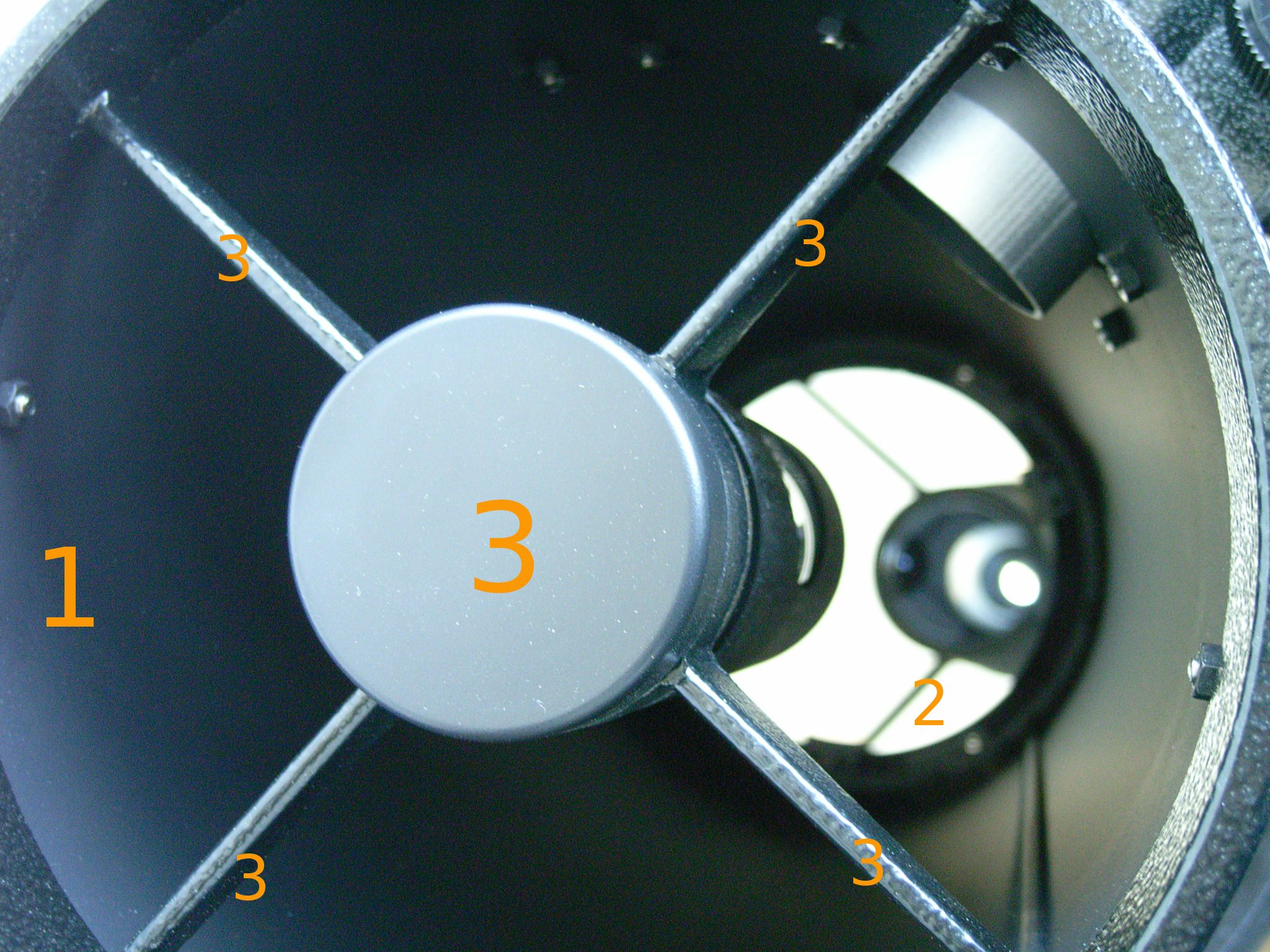When asked to draw a star, we involuntarily trace a five-point regular star polygon. We don’t produce a circle, paint it yellow or deep ruddy red or electric blue, and go out loud saying, here are your stars — a yellow dwarf, a red dwarf, and a blue giant. Nor do we hand over a blank paper, arguing for a white star, our sun, drawn on a white paper. Instead of all that, we prefer tracing a five-point star polygon with spiky elongations.
Stars are, in fact, are only spheres — giant blobs of hot plasma like our sun. Yet in all astronomical photographs taken by the veteran Hubble space telescope or the year-old Webb, stars never feature a smooth circular contour like our sun. Instead, they come wearing long, pointy hats on all sides in sets of four, five, six, or more.
 |
Globular Cluster Messier 4 (M4). The stars in Hubble's photograph feature
four long spikes forming a 'cross'. The spikes don't really belong to the stars but
are an artifact of the instrument itself.
Credit: ESA/Hubble, NASA. |
The spikes, better known as diffraction spikes, are an artifact of the very instruments, the telescopes, Hubble or JWST, or whatever reflectors we use to capture starlight.
 |
A Newtonian Reflector Telescope.
Credit: Public Domain, via Wikimedia Commons.
|
Before going into the specifics of diffraction spikes, it is better to take a closer look at the constriction of a (Newtonian) reflector telescope. The simplest involves a cylindrical tube at whose base rests a large parabolic mirror called the primary mirror. The primary mirror’s task is to focus the incoming light onto a secondary mirror placed some distance before the focal (converging) point of the light reflected from the primary. For a Newtonian telescope, its secondary mirror has to be supported by X-shaped struts or a spider attached to the inner wall of the tube. In the adjacent photograph, (1) is the optical tube, (2) is the primary mirror, and (3) — the circular thingy is the secondary mirror unit. For optical telescopes in the 400 - 700 nm range, one uses a diagonal mirror, outside which, in the infrared or ultraviolet range, a generic sensor replaces the diagonal. The Hubble Space Telescope is only a larger version of your backyard reflector.
 |
The so-called diffraction pattern or Airy disc
manifests when a red laser beam passes
through a tiny hole.
Credit: Public Domain,
via Wikimedia Commons. |
Diffraction is a fascinating attribute of the wave nature of light. Light from a star (or a bulb or whatever) travels as concentric circles like the water waves that develop when a small stone drops into an otherwise calm lake. For a very distant star, the circular waves become almost parallel planes. When such parallel plane wavefronts meet a solid obstacle, they try to bend around the corners. If the obstructing body has a tiny hole in it, a part of the light waves squeeze itself through the circular aperture. Then, the circular aperture becomes the new source of these so-called secondary wavelets. As these secondary wavelets radiate out, in some regions, they join together, their amplitudes add, and in other places, their amplitudes cancel each other. The wavefronts interfere, giving rise to alternating bands of light and dark. At the same time, light bends around the very edges of the tiny hole. Together, they create a beautiful pattern of light and shadow on the other end, known as the diffraction pattern.
In reflector telescopes, the spider or the support wires holding the secondary mirror unit before the primary cuts off a portion of the incoming starlight. Although the cut-off is small compared to the amount of infalling light, it marks every single star. The diffraction pattern depends on the arrangement of the struts. From a careful look at the schematic below, you can readily understand how a single strut wire produces less diffraction than two of them placed at 180° to each other. Again, two struts at 90° and three at 120° impinge a comparatively fainter pattern than four struts at 90° to each other.
 |
Different arrangements of spiders give rise to distinct patterns of diffraction spikes.
Credit: Public Domain, via Wikimedia Commons (link).
|
 |
Diffraction pattern due to different mirror assemblies.
Credit: Public Domain, via Wikimedia Commons (link) |
And not just the struts; the very shape of the mirror induces some distortion as light essentially diffracts from the mirror's edges. The figure on the right depicts the kind of diffraction imposed due to the shape of the mirror. A circular primary produces the Airy (above) pattern of a point source of light(star). A hexagonal mirror forms the Airy disc as concentric hexagons. The schematic shows how JWST's hexagonal segmented mirror assembly stretches out every bright point of starlight into an elongated six-point star onto which its struts for the secondary mirror unit place their own signature so that the end result becomes an eight-point star.
%20(1).jpeg) |
Like Hubble, Webb signs its works
by stretching out every stellar object into
an eight point Christmas star.
Credit: ESA/Webb, NASA & CSA. |
Diffraction spikes are an exclusive feature of reflector telescopes. It doesn't matter if they're of the Newtonian type, or Cassegrain, Gregorian, prime focus, Cassegrain focus, or whatever. As long as the telescope arrangement involves a secondary mirror supported by struts, there'll always be these diffraction spikes. Refractor telescopes, on the other hand, have no mirrors but lenses. One persistent problem of the lens is chromatic aberration — rainbow and blurred edges around the stars. As a matter of fact, no optical imaging system, microscopes, telescopes, or cameras can ever be designed without introducing some distortions. Our very human eyes are no exception. Some structural imperfections in the eye lens mess up our naked-eye view of the stars. On a clear night, look at the stars, and you'll notice apart from the usual twinkling, that stars don't really look like points but smeared asterisks.
Without affecting the scientific side of astronomy, diffraction spikes, however, have an aesthetic advantage. The brighter the source of light, the stronger the spikes. Hence, in long-exposure photographs, every bright star transforms into a Christmas Star.



%20(1).jpeg)



Comments
Post a Comment